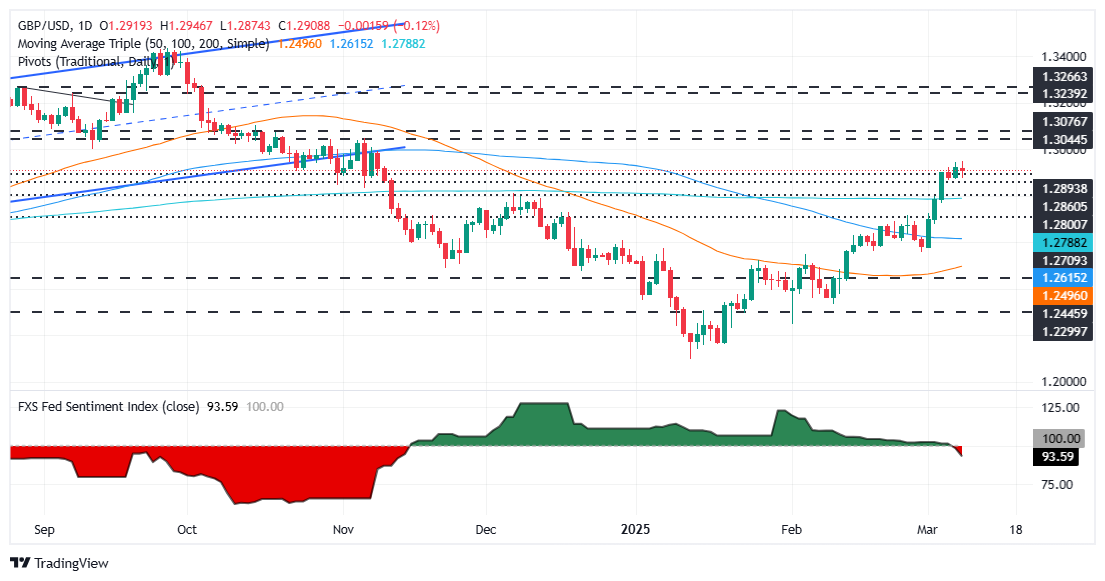- Trump cautions about economic turbulence amid an ongoing "transition period."
- US recession fears grow, boosting expectations for 80 bps of Fed rate cuts in 2025.
- DXY dips to 103.76 as investors seek safe-haven currencies.
- Traders focus on US CPI data Wednesday and UK GDP figures Friday for market direction.
The Pound Sterling remains range-bound against the US Dollar on Monday amid a light economic calendar, with traders awaiting key US inflation data and the UK’s Gross Domestic Product (GDP) figures later in the week. GBP/USD trades at 1.2915, up 0.04%.
Sterling Holds Steady Amid US Inflation Worries and UK GDP Anticipation
Market sentiment remains cautious due to concerns over US President Donald Trump’s trade policies. On Friday, Trump warned of potential short-term economic turbulence, describing the current phase as a “period of transition” due to the scale of his policy changes.
Growing fears of a US recession or even stagflation have driven investors toward safe-haven currencies like the Swiss Franc and the Japanese Yen. As a result, expectations for Federal Reserve (Fed) rate cuts have increased, with traders now pricing in 80 basis points of easing by year-end, according to data from the Chicago Board of Trade (CBOT).
Meanwhile, the US Dollar continues to weaken, with the US Dollar Index (DXY), which measures the Greenback’s value against six major currencies, declining 0.14% to 103.76.
Data from the New York Fed Consumer Sentiment Survey showed that inflation expectations for the next year rose from 3% to 3.1% in February, while three- and five-year inflation expectations remained steady at 3%. Americans anticipate rising prices in gas, rent, and food.
This week’s US economic calendar features the JOLTs Job Openings report on Tuesday, followed by the Consumer Price Index (CPI) release on Wednesday. On the UK side, GBP/USD traders will closely monitor GDP figures set for release on Friday.
GBP/USD Price Forecast: Technical Outlook

GBP/USD remains in consolidation mode for the second consecutive day, struggling to break decisively above the 1.2950 resistance level. While price action suggests an upward bias, the Relative Strength Index (RSI) signals overbought conditions, raising the risk of a pullback. A stronger US Dollar could push GBP/USD down toward the 200-day Simple Moving Average (SMA) at 1.2788.
On the flip side, a sustained move above 1.2950 could open the door for a test of the key psychological level at 1.3000.





